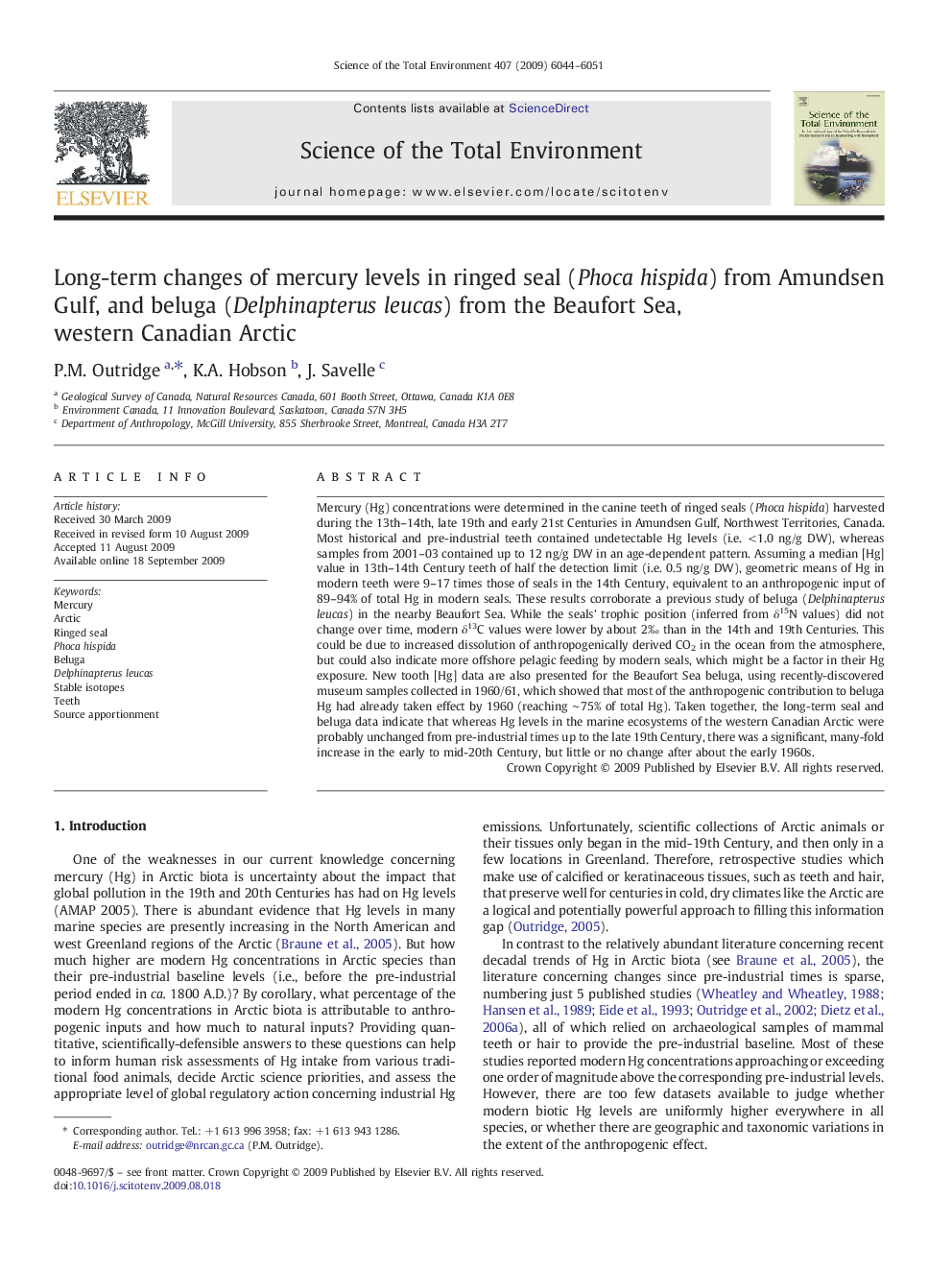| Article ID | Journal | Published Year | Pages | File Type |
|---|---|---|---|---|
| 4431041 | Science of The Total Environment | 2009 | 8 Pages |
Mercury (Hg) concentrations were determined in the canine teeth of ringed seals (Phoca hispida) harvested during the 13th–14th, late 19th and early 21st Centuries in Amundsen Gulf, Northwest Territories, Canada. Most historical and pre-industrial teeth contained undetectable Hg levels (i.e. < 1.0 ng/g DW), whereas samples from 2001–03 contained up to 12 ng/g DW in an age-dependent pattern. Assuming a median [Hg] value in 13th–14th Century teeth of half the detection limit (i.e. 0.5 ng/g DW), geometric means of Hg in modern teeth were 9–17 times those of seals in the 14th Century, equivalent to an anthropogenic input of 89–94% of total Hg in modern seals. These results corroborate a previous study of beluga (Delphinapterus leucas) in the nearby Beaufort Sea. While the seals' trophic position (inferred from δ15N values) did not change over time, modern δ13C values were lower by about 2‰ than in the 14th and 19th Centuries. This could be due to increased dissolution of anthropogenically derived CO2 in the ocean from the atmosphere, but could also indicate more offshore pelagic feeding by modern seals, which might be a factor in their Hg exposure. New tooth [Hg] data are also presented for the Beaufort Sea beluga, using recently-discovered museum samples collected in 1960/61, which showed that most of the anthropogenic contribution to beluga Hg had already taken effect by 1960 (reaching ∼ 75% of total Hg). Taken together, the long-term seal and beluga data indicate that whereas Hg levels in the marine ecosystems of the western Canadian Arctic were probably unchanged from pre-industrial times up to the late 19th Century, there was a significant, many-fold increase in the early to mid-20th Century, but little or no change after about the early 1960s.
